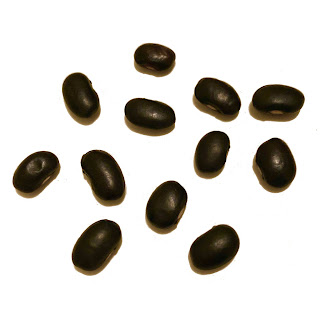Skip to main content
why beans?

Choosing what to eat is no longer simply a matter of what tastes good. We’re inundated with an immense amount of scary information about food every time we read the news. The ingredient lists on packaged foods usually end with a stream of things we can’t even visualize. Concerns about the environmental impact of our food consumption are more pressing than ever before. And though we’ve always had to consider the cost of food, often times we end up spending absurd amounts of money when trying to eat healthily and sustainably, hoping seven dollar green juices will cure our ills.
When I start to contemplate what to cook for dinner, I’m flooded with all of these considerations, and I still want to make something delicious! With all this in mind, I try to imagine the theoretically perfect dinner, that is, one that maximizes affordability, sustainability, nutritional value, and, of course, taste. After mulling this over, dinner after dinner, I’ve not yet discovered the perfect dinner, but I think I’ve found the perfect ingredient. Surprise, it’s beans! Here is my case for why.
Affordability: Perhaps the most obvious and well known appeal of beans is their reasonable price, but I’ll elaborate on the specifics. The fanciest beans, like Mexican heirlooms from food writer-hyped bean business Rancho Gordo, go for around six dollars per pound. Keep in mind that we’re talking about dried beans in this case, so a pound is actually around ten servings [1]. At your grocery store’s bulk section, you can find standard beans for around two dollars per pound, which translates to a mere twenty cents per serving. Quite the steal!
Sustainability: Acknowledging that it’s virtually impossible to account for all factors in a calculation of environmental impact, I feel comfortable making the claim that beans do relatively little destruction on their way from germination to our stomachs. You may be familiar with the viral headline from 2017, which proposed that if all Americans ate beans instead of beef, we could meet the 2020 greenhouse gas emissions goal set by President Obama in 2009 [2]. Though we’re now in 2020 and still eating plenty of beef, the fact remains that if we ate beans for three years instead, the U.S. would be far closer to doing its part in mitigating the climate crisis. There are micro factors between bean choices that we might want to consider, like the waste produced by canned beans and the transportation emissions of imported beans, but for now, let’s just be excited that beans are way more sustainable than meat-based protein alternatives.
Nutritional Value: Beans are a complex carbohydrate, full of fiber, and contain important vitamins like phosphorus and magnesium. Additionally, beans contain protein and iron. These are essential nutrients that most of us get primarily from meat, making beans a viable replacement of meat as the star of a dinner. In fact, the U.S. Department of Health and Human Services recommends eating one and a half cups of legumes per week [3]. I hope I’ll convince you to eat even much more than that.
Taste: Unlike the last three criteria, I can’t use facts to prove that beans can taste amazing. Some of you may be convinced that you hate beans, or at the very least, think they are boring and bland. Until I started cooking dried beans rather than eating them from a can, I was unenthusiastic about them myself. Though canned beans are relatively affordable, sustainable, and nutritious, they just don’t taste that great. However, until you’ve cooked a big, steaming pot of dried beans at home, I will not be convinced that you don’t like beans at all. Home cooked dried beans are pillowy and creamy, nothing like the mushy, pastiness of beans from a can. And the difference is not only textural. When you cook beans at home, you can salt, season, and spice the cooking water to your palate’s specific taste, which the beans will then absorb. My words can only do so much to convince you, so go cook some beans yourself!
I hope I’ve started to persuade you that the combination of beans’ high affordability, sustainability, nutritional value, and taste makes them the perfect dinner ingredient. But even if I haven’t convinced you, I’ve convinced myself so thoroughly that I’ve decided to only cook dinners where beans are the star, at least for now. Soon after I made this commitment, however, I realized that though I obviously think beans are awesome, I actually know little about what they are, where they come from, and their rich culinary history. In just a quick search on the origins of bean eating, I learned that we’ve found 4000 year old fava beans buried in Egyptian tombs! This got me thinking about how by only eating beans, I’m not just ridding myself of the burden of choosing what to eat. I could also be encouraging myself to explore new recipes and learn exciting history.
This brings me to the purpose of this blog. As I embark on my bean eating journey, I want to explore one kind of bean at a time in depth. To do so, I’ll document both the recipes I’m cooking and the history of these recipes. Sometimes I may put my own spin on recipes, but I’ll always be clear about what I’m changing. In a broader sense, this blog is not only an exercise in cooking and learning, but also in finding beauty and intrigue in the seemingly unglamorous and mundane. I hope you’ll join me along the way!
[1] “Bean Counting: The Bean Yield Chart.” Bean Institute, beaninstitute.com/bean-counting-the-bean-yield-chart/.
[2] Hamblin, James. “If Everyone Ate Beans Instead of Beef.” The Atlantic, Atlantic Media Company, 23 Oct. 2018, www.theatlantic.com/health/archive/2017/08/if-everyone-ate-beans-instead-of-beef/535536/.
[3] U.S. Department of Health and Human Services and U.S. Department of Agriculture. 2015 – 2020 Dietary Guidelines for Americans. 8th Edition. December 2015. Available at https://health.gov/dietaryguidelines/2015/guidelines/.



Comments
Post a Comment